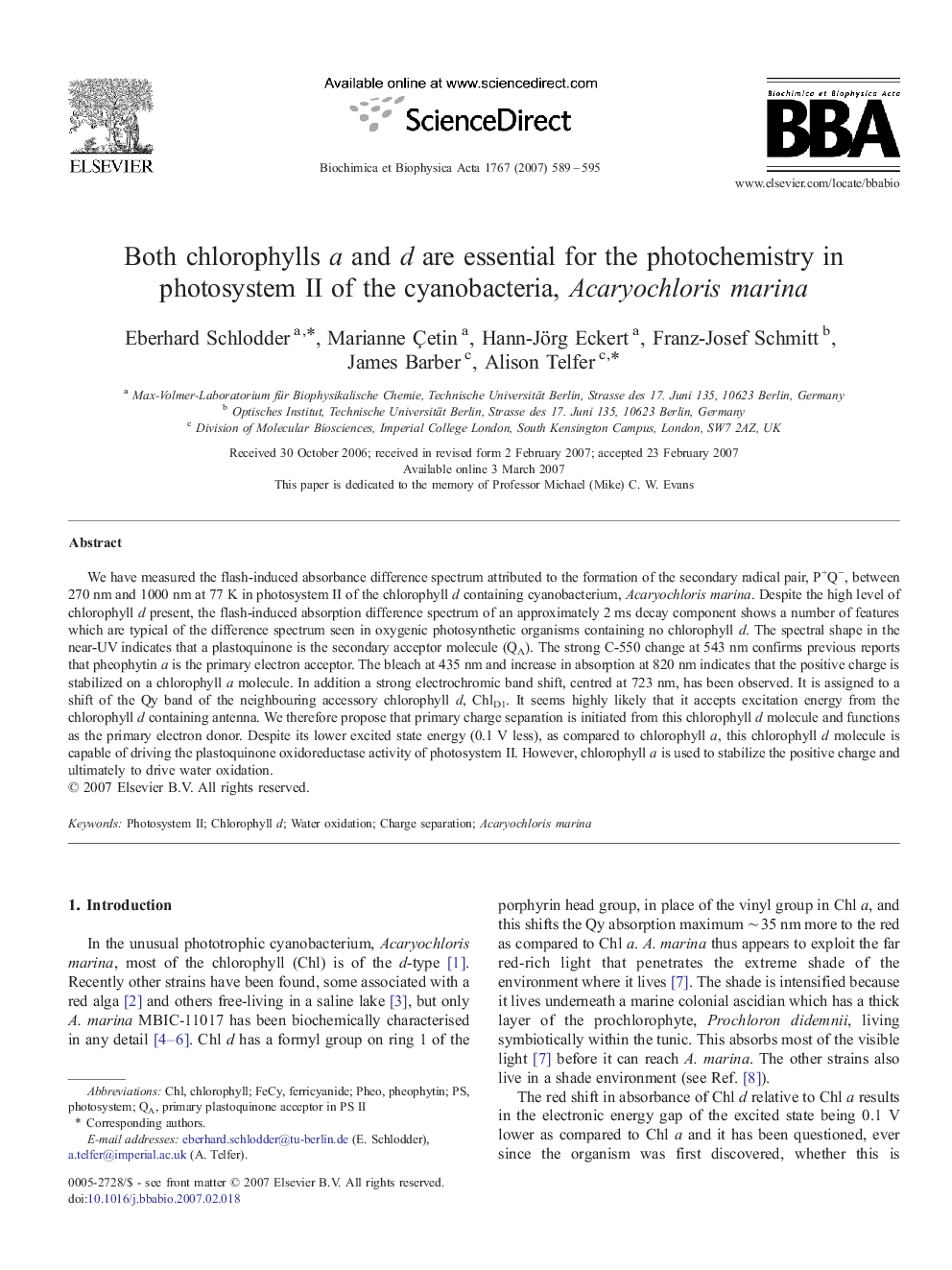| Article ID | Journal | Published Year | Pages | File Type |
|---|---|---|---|---|
| 1943562 | Biochimica et Biophysica Acta (BBA) - Bioenergetics | 2007 | 7 Pages |
We have measured the flash-induced absorbance difference spectrum attributed to the formation of the secondary radical pair, P+Q−, between 270 nm and 1000 nm at 77 K in photosystem II of the chlorophyll d containing cyanobacterium, Acaryochloris marina. Despite the high level of chlorophyll d present, the flash-induced absorption difference spectrum of an approximately 2 ms decay component shows a number of features which are typical of the difference spectrum seen in oxygenic photosynthetic organisms containing no chlorophyll d. The spectral shape in the near-UV indicates that a plastoquinone is the secondary acceptor molecule (QA). The strong C-550 change at 543 nm confirms previous reports that pheophytin a is the primary electron acceptor. The bleach at 435 nm and increase in absorption at 820 nm indicates that the positive charge is stabilized on a chlorophyll a molecule. In addition a strong electrochromic band shift, centred at 723 nm, has been observed. It is assigned to a shift of the Qy band of the neighbouring accessory chlorophyll d, ChlD1. It seems highly likely that it accepts excitation energy from the chlorophyll d containing antenna. We therefore propose that primary charge separation is initiated from this chlorophyll d molecule and functions as the primary electron donor. Despite its lower excited state energy (0.1 V less), as compared to chlorophyll a, this chlorophyll d molecule is capable of driving the plastoquinone oxidoreductase activity of photosystem II. However, chlorophyll a is used to stabilize the positive charge and ultimately to drive water oxidation.
